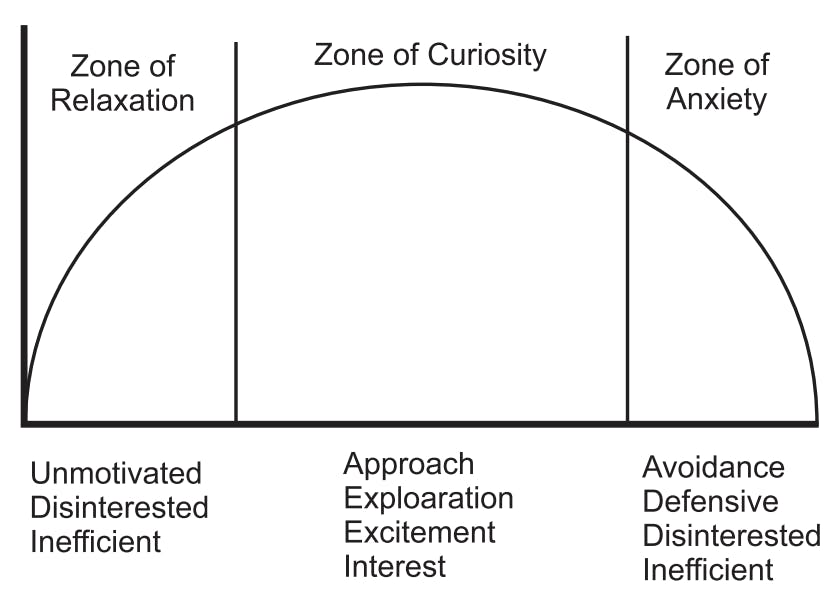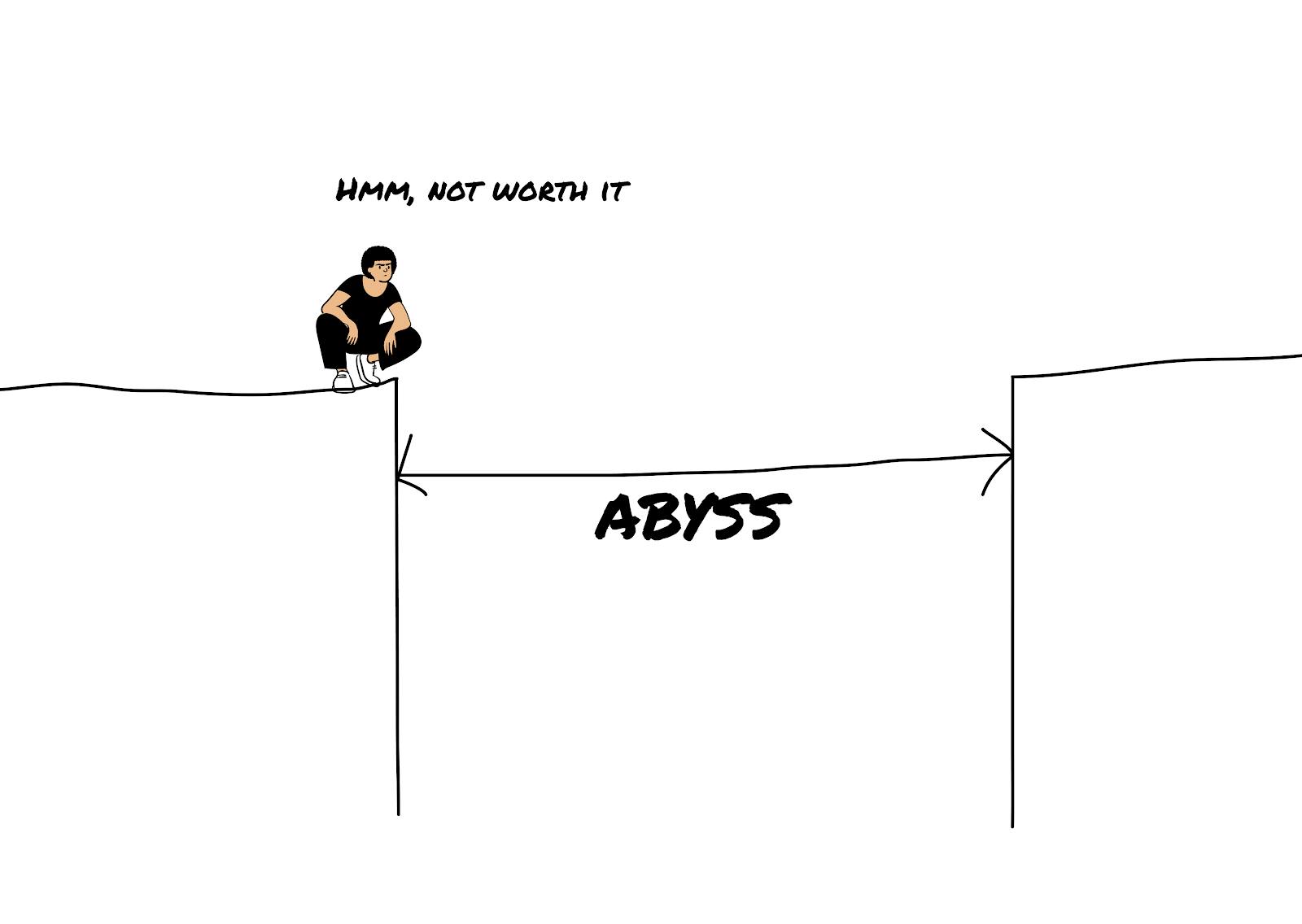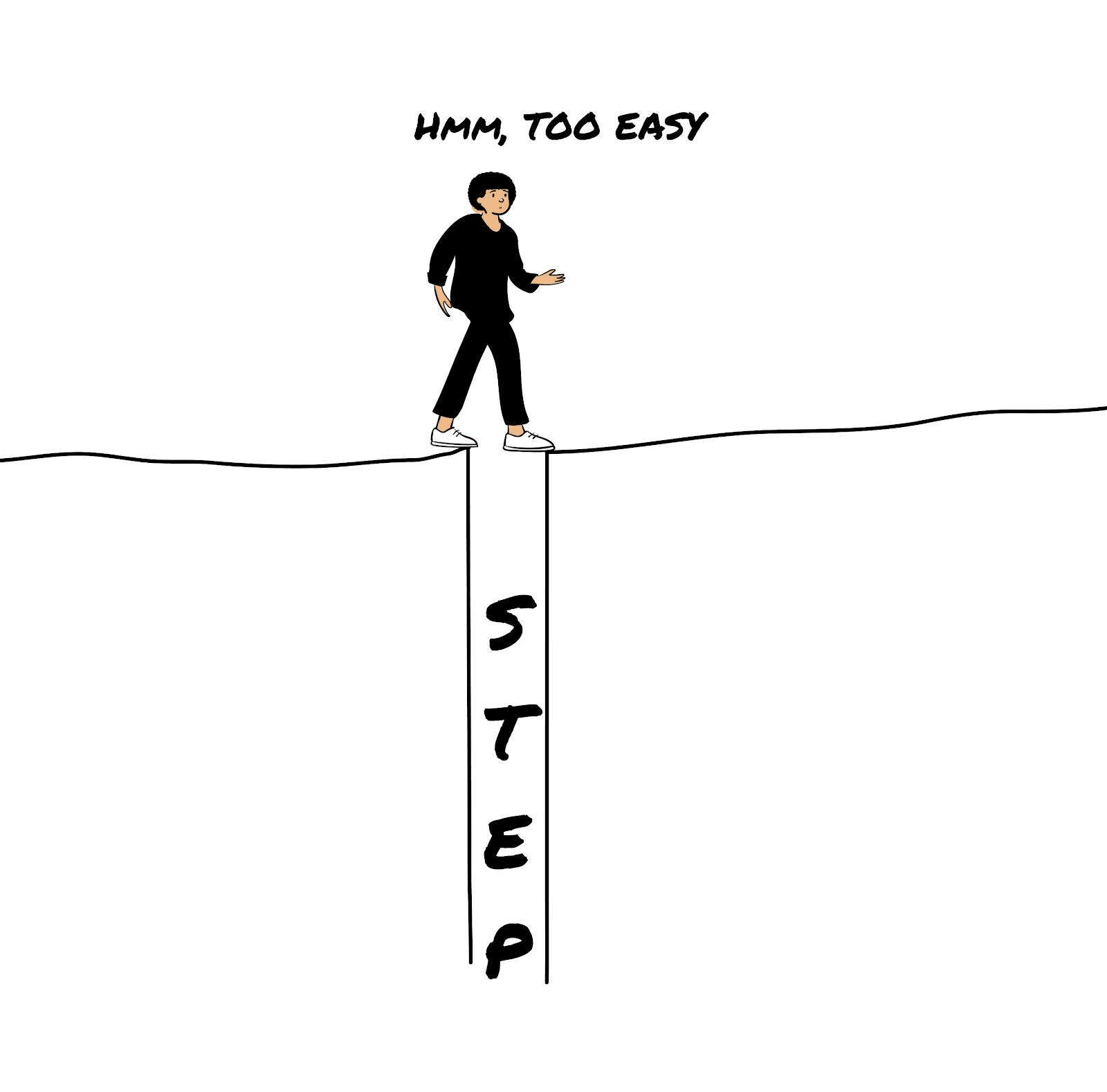The Science Behind Curiosity
When I was little, maybe 7 or 8 years old, I remember reading a funny story. It was called ‘The White Elephant’. It goes like this:
Long long ago, in a faraway land, lived a hardworking gardener and his wife. One night, the gardener was walking back home from work, when he heard a rustle in the bushes. He hid and peered out from the bushes, and to his utter surprise, found a white elephant. The elephant silently grazed the grass for some time, and then took off flying towards the sky just before dawn.
Out of curiosity, the gardener ran and hung on to the elephant’s tail. A few moments later, he found himself in a strange garden. Everything in it was enormous — tomatoes, apples, cucumbers, you name it. The gardener gleefully started picking up some fruits and vegetables to take home. A few hours later, the white elephant reappeared and started going back to earth. Our man hung on to the tail and hurried home with the loot.
He told his wife about the adventure. She was unable to contain her excitement, so she told her friends about it. Somewhat in the spirit of fake news, the story spread and everyone demanded to go on this adventure. On a selected day, the whole village hid behind bushes. When the gardener ran to catch the elephant’s tail, the villagers followed him and formed a long chain, hanging on to each other’s legs.
It was all going well and the group was well on its way towards the garden until the last person could not contain their excitement any longer and asked the person above exactly how big a watermelon in this garden could be. The question was passed on and reached the gardener. He got annoyed and shouted, “they are THIS big”, opening up his hands wide. They all fell down.
I remember laughing a lot at this story. But unfortunately, as a behavioral scientist, I am now questioning the details. Why did the gardener have to hang on to the elephant’s tail? What made his story spread like fake news? Why was everyone dying to go on this adventure?
But it’s not just about this story. Why do we watch binge-watch cliffhangers? Why do we care if 2 random strangers ended up marrying each other on reality shows? Why does it matter if an iPhone X can be blended? (Spoiler alert: Yes – it can be blended into a fine powder)
To put it simply, we are all what Herbert Simon referred to in the title of his talk at Carnegie Mellon in 1992 – “The Cat that curiosity could not kill”.1
Behavioral Science, Democratized
We make 35,000 decisions each day, often in environments that aren’t conducive to making sound choices.
At TDL, we work with organizations in the public and private sectors—from new startups, to governments, to established players like the Gates Foundation—to debias decision-making and create better outcomes for everyone.
The curious case of curiosity
For many years, curiosity has baffled psychologists and philosophers alike. This is not surprising in itself, given that our curiosity goes as far back as the story of Eve taking a bite of the apple she was forbidden from touching and Pandora opening the box she was told not to open.
One of the earliest attempts at uncovering the underlying reasons behind curiosity was by William James in his 1890 publication, The Principles of Psychology.2 He identified two types of curiosity: one driven by emotions, and one driven by scientific wonder. Following this, several other attempts were made, and we now have a somewhat clearer understanding of what gets us curious and how we can sustain this.
Daniel Berlyne introduced us to the world of curiosity aroused by external stimuli with characteristics of novelty, uncertainty, and conflict. He also hypothesized on the level of stimulation — if the stimulation is too low, there will be no reason to explore, and if it is too high, it will result in anxiety.3 The right balance of stimulation is needed for exploration. This has been captured as the “zone of curiosity” by H.I. Day, a colleague of Berlyne.4

The AI Governance Challenge
Taking this hypothesis further, George Loewenstein synthesized several theories and produced what is now known as the “information gap theory”.5 This states that for curiosity to be aroused, a small amount of knowledge about the subject serves as a priming dose. The gap that emerges between what’s known and what’s unknown is what drives motivation for curiosity. Based on this, we arrive at a simple framework to think about curiosity and how we can use it in product design and marketing.
Getting the curiosity mix right

Imagine it this way. There are two cliffs, separated by a gap. So, three things need to happen for someone to jump from one cliff to another over the gap:
- People need to reach the edge of the first cliff
- People need to feel curious enough to want to know what’s on the other cliff
- People need help to jump to the second cliff.
Now, apply this analogy to make people curious about a subject, make them want to know more, and then give them enough information to help them cover the gap they have about the subject.
Let’s look at each of these steps.
Step 1: Bringing people to the gap – Grabbing attention
Our brain is designed to notice when things change. The best way to get people’s attention is to break a pattern and bring about a change that gets noticed. Surprise is a reaction that is triggered when a pattern gets broken and our existing schemas of knowledge fail. Our brain demands attention to help understand why the failure happened so we can prepare for future events.6
So the right way to use surprise to get attention is to break a pattern, cause a schema to fail, and then fix the schema by giving information. If there is no fix, people lose interest. An interesting study that uses this methodology was done by Bruce Whittlesea and Lisa Williams. They tasked people to look at 4 words and react.7 These words were:
HENSION
BARDLE
PHRAUG
TAYBLE
PHRAUG and TAYBLE look unusual but sound familiar. They break a schema, but people can immediately put two and two together and arrive at an explanation: frog and table. BARDLE and HENSION cause a frown because they look familiar but cannot be placed in any existing schema. They cannot be “solved”.
A similar theme is observed in advertising. A good ad is one that piques interest and then lets the audience figure a solution. As opposed to an advertisement that piques interest and does not fix the problem satisfactorily. Consider this famous advertisement by CANAL+.
The reveal of the bear at minute 0:21 is the surprise and this builds up till minute 1:07 when they show why the bear is playing the role of a director. If the reveal at 1:07 had been a non-consequential joke, such as a generic statement that said bears love movies as much as humans, this advertisement would have failed.
Step 2: Convert the abyss to a gap
So you have grabbed attention. Now, what can you do to keep people on the edge? The key here is to ensure the gap does not seem like an abyss to the person.

Loewenstein gives an interesting context to this with an analogy.5 Say person A knows the state capitals of 47 out of 50 states, while person B knows the state capitals of 17 out of 50 states. Who do you think would be more curious to close the gap and reach 50 quicker? The people who know 47 state capitals focus on what they don’t know. So, Person A has a curiosity to close that gap and know more, as opposed to person B, who is proud of their knowledge of 17 capitals.
This plays out in many forms around us. For instance, celebrity gossip is popular because we know a lot about being human and we understand a lot of emotions, but we don’t know the exact details of being Kim Kardashian. When she gives us a sneak peek into her life, she is filling those gaps.
So the key is to give some knowledge that forms a basis and then fill the gaps. Have you ever noticed that reality shows such as American Idol often show a background context about the participant before revealing their talent? It is generally quite dramatic with tears and backstories that seem straight out of movies. In the absence of that, the audience is viewing the participants as just singers. The background context fills up the knowledge bucket just enough to make them curious to know how these people would perform.
Step 3: Making sure the gap isn’t too small
Once a person has reached the edge and is waiting for the reveal, the size of the gap becomes important. If the gap is made too small with the knowledge we are providing, crossing the gap becomes a small step. In other words, a huge build-up followed by a small reveal will cause disappointment.

If you were playing a video game and the hints are step by step guides that keep telling you at every point exactly what you should do, you would lose interest in the game very fast.
The trick is to give just the right amount of information to keep people engaged. They should know enough to wonder about the next reveal and start forming theories in their mind. No one enjoys a mystery thriller book that makes the killer too obvious. The fun is in giving people clues and making them curious enough to solve the mystery while reading.
So there you go. Curiosity never killed the cat. It only made the cat more engaged with its environment, provided the gap was just the right amount. Now if you will excuse me, I must go find out if an Amazon Echo can be blended in a blending machine.
References
- Gobet, F. (2016). From bounded rationality to expertise. In Minds, models and milieux (pp. 151–166). Springer.
- Borowske, K. (2005, April). Curiosity and motivation-to-learn. In Comunicación presentada a la ACRL Twelfth National Conference.
- Berlyne, D. E. (1954). An experimental study of human curiosity. British Journal of Psychology, 45(4), 256.
- Day, H. I. (1971). The measurement of specific curiosity. In H. I. Day, D. E. Berlyne & D. E. Hunt (Eds.), Intrinsic motivation: A new direction in education. Ontario: Ontario Institute for Studies in Education.
- Loewenstein, G. (1994). The psychology of curiosity: A review and reinterpretation. Psychological bulletin, 116(1), 75.
- Heath, C., & Heath, D. (2007). Made to stick: Why some ideas survive and others die. Random House.
- Bruce W. A. Whittlesea and Lisa D. Williams, “The Discrepancy-Attribution Hypothesis II: Expectation, Uncertainty, Sur- prise, and Feelings of Familiarity,” Journal of Experimental Psychology: Learn- ing, Memory, and Cognition 27 (2001): 14–33.
- Illustration Figures: Open Peeps
About the Author
Preeti Kotamarthi
Preeti Kotamarthi is the Behavioral Science Lead at Grab, the leading ride-hailing and mobile payments app in South East Asia. She has set up the behavioral practice at the company, helping product and design teams understand customer behavior and build better products. She completed her Masters in Behavioral Science from the London School of Economics and her MBA in Marketing from FMS Delhi. With more than 6 years of experience in the consumer products space, she has worked in a range of functions, from strategy and marketing to consulting for startups, including co-founding a startup in the rural space in India. Her main interest lies in popularizing behavioral design and making it a part of the product conceptualization process.




